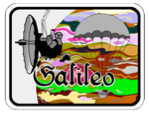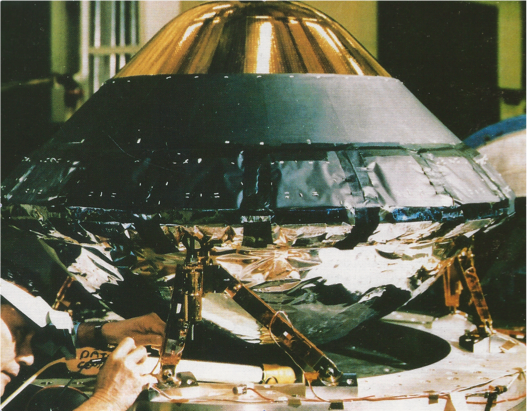- Determine the chemical composition of the Jovian atmosphere;
- Characterize the structure of the atmosphere to a depth of at least 10 bars;
- Investigate the nature of cloud particles and the location and structure of cloud layers;
- Examine the Jovian radiative heat balance;
- Study the nature of Jovian lightning activity; and,
- Measure the flux of energetic charged particles down to the top of the atmosphere.

Mission Objectives or Goals
Mission Events
Galileo Launch: Oct. 18, 1989
Probe release: July 12, 1995
Entry and relay: Dec. 7, 1995
Probe release: July 12, 1995
Entry and relay: Dec. 7, 1995
Mission Summary
The probe returned data until it reached a depth corresponding to an atmospheric pressure of ~24 bars. The probe and all scientific instruments functioned successfully, and accumulated data on composition, clouds, thermal structure, winds, energy balance, lightning, and inner radiation belts. Wind speeds in excess of 600 kilometers per hour (> 400 mph) were detected along with less water than estimated from earlier Voyager observations and from models of the Comet Shoemaker-Levy 9 impact. There was less lightning activity than anticipated; however, individual lightning events were about ten times stronger on Jupiter than the Earth. The helium abundance was similar to solar abundance (24% compared to 25%).
Access to the Galileo Probe Data Volume
References Helpful in Scoping the Mission
The Mission Description
The Probe description
A list of pertinent references
Other supporting documentation
The Probe description
A list of pertinent references
Other supporting documentation
The Instrument ensemble was composed of:
The Atmospheric Structure Instrument (ASI)
The Energetic Particle Instrument (EPI)
The Helium Abundance Detector (HAD)
The Lightning and Radio Emission Detector (LRD)
The Nephelometer (NEP)
The Net Flux Radiometer (NFR)
The Neutral Mass Spectrometer (NMS)
The Doppler Wind Experiment (DWE) – The analysis
of the radio signal to determine atmospheric winds.
The Energetic Particle Instrument (EPI)
The Helium Abundance Detector (HAD)
The Lightning and Radio Emission Detector (LRD)
The Nephelometer (NEP)
The Net Flux Radiometer (NFR)
The Neutral Mass Spectrometer (NMS)
The Doppler Wind Experiment (DWE) – The analysis
of the radio signal to determine atmospheric winds.
 PDS: The Planetary Atmospheres Node
PDS: The Planetary Atmospheres Node



